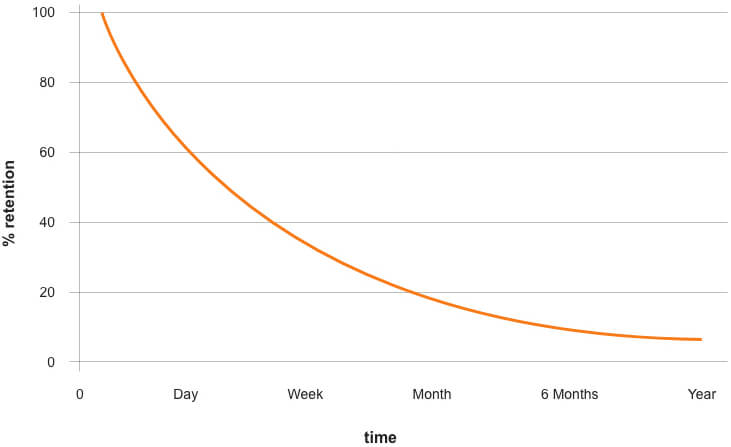The State of Deskless Workforce Training
Deskless workers make up 80% of the global workforce, Deskless workers make up80% of the global workforce, and yet research has focused largely on their employers, until now. This survey conducted by TalentCards shines a spotlight on these deskless workers and the state of their training.
We surveyed 600 frontline workers from four countries, employed in a range of industries including healthcare, education, retail and more.

The definition of deskless workers
Deskless workers, also known as frontline workers, are people who don’t do their jobs from behind a desk. Unlike people who work in traditional office settings, deskless employees are on their feet or on the move throughout their workday.
Some examples of these professions include nurses, teachers, salespeople, construction workers, truck drivers, and more.
01. Main findings
Discover their reasons
383respondents said they would not switch to a desk job given the chance.
Here are some of their reasons why:
- “No, I enjoy not being chained to a desk.”
- “No. I don’t like the idea of being stuck behind a desk. My job is very practical and hands on.”
- “No, I found that I became very unfit doing desk work.”
- “Working behind a desk is monotonous and boring to me.”
- “No, desk work is boring to me.”
- “No, I’d much rather be hands-on, and be out of office, rather than be chained to a desk.”
- “No. Everyone knows desks jobs are bad for your health. I’m basically being paid to exercise. I don’t need to work out when I get home from work because I’ve already burned a large number of calories over the course of my workday.”
Discover more
Discover more
Research on memory and retention over time shows that the forgetting curve is much steeper than respondents believe it to be. Comparing reported responses on retention to empirical data shows that employees consistently overestimate how much they actually remember.
Without reinforcement, this is what retention actually looks like:

Takeaway: Reinforcement training is key for retention. Without follow-up training and review, employees will forget nearly 100% of what they learned after 30 days.

Discover more
With deskless workers outnumbering desk workers 4 to 1 on a global scale, helping them feel connected to their company’s missions and values should be a top priority.
Tech may be a potential solution to solving this problem, since it helps eliminate the distance between deskless employees and their company’s central location. But a 2018 report shows that only 1% of software venture funding goes toward creating tech that would serve these frontline workers.
To help uncover solutions to decrease the disconnect deskless employees feel, we asked respondents if access to additional training would help them feel more connected to their company’s values and mission.
Training has evolved from manuals and textbooks, but has it become any more enjoyable? We asked employees how their training experience could be improved, and here’s what they had to say:

02. Deskless Workers and COVID-19
- “I might consider it now because of the dangers of COVID”
- “I work in hospital emergency rooms which feels much more dangerous given the pandemic. Would feel better protected behind a desk in an office”
- “Currently with COVID I would”
- “Yes, COVID has made me scared to work with the public. If I could do my job without that interaction for the same pay I would”
- “Yes, current pandemic puts me in close proximity to too many people”



03. Is the future of training mobile?
When we filter responses based on age group, that number increases in younger adults. And yet, only 6% of respondents reported that they received the majority of their training over a mobile device.
Discover more
Millennials already make up the majority of the workforce, and while Baby Boomers continue to exit, Gen Z is entering. Younger adults’ preference for tablets and smartphones shows that mobile training will continue growing in importance in the years to come.
Respondents who chose a smartphone or a tablet as their most preferred device for training:
35% of people aged 18-24
25% of people aged 25-34
26% of people aged 35-44
24% of people aged 45-54
22% of people older than 54
Takeaway: With only 1% of software venture funding going toward tech made for deskless workers, it’s likely that some respondents have never trained using a smartphone or tablet before. Only 6% of respondents reported receiving the majority of their training from a mobile device.
The result? Significantly more than 26% of respondents may prefer smartphones or tablets over desktops or laptops for training, but they just don’t know it.


Takeaway: Mobile training may be the undiscovered solution to many of the challenges that deskless employees face: feeling disconnected, difficulty accessing training, having to take time away from the job to complete it.
And while a majority report that they prefer to complete training using a desktop computer, they may have never experienced mobile training before, and therefore have never considered it as a better alternative.
04. A closer look at training in each industry
A closer look at the following four training statistics helps provide some insight into the nature of each industry’s different challenges and training policies:



05. Deskless training by country




Who we surveyed
In an effort to obtain a representative sample of the deskless workforce, we surveyed 600 deskless employees from the US, the UK, Canada, and Australia.
Respondents were all employed for wages, have received training from their employers in the last 12 months, and were at least 18 years old.
About this story
Editing by Eleni Papaioannou. Design by Petros Dimitriadis. Development by TalentCards Devs.

